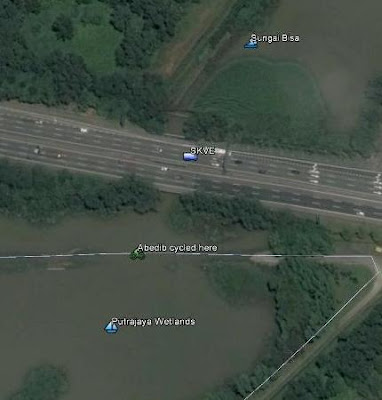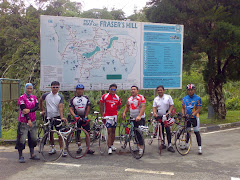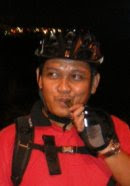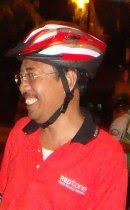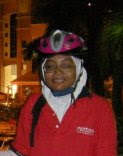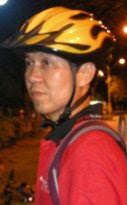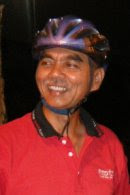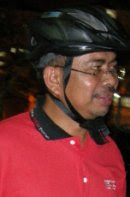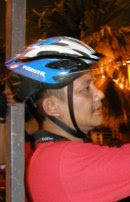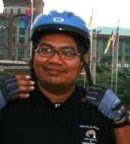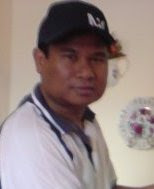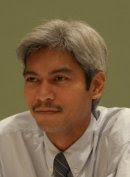During last year's December school holidays, Doc Taufik organised a Train Ride & Bike outing from Kuala Lumpur to Ipoh. We planned to take the ETS train from Kuala Lumpur (south endpoint) to Ipoh (north endpoint), ride around Ipoh and then take the train back to KL.
The itinerary was simple enough since this would be our first train ride & bike activity.
6 Dec 2014 (Saturday):
8.00am: Arrive at KL old train station (near Masjid Negara)
8.00 - 9.04am: Packing the bikes.
9.04 - 11.20am: Train ride from KL to Ipoh
11.20-12.00pm: Cycle to Nasi Ganja/Vanggey
12.00 - 1.30pm: Lunch
1.30 - 2.30pm: Ride to nearest mosque & solat Zohor.
2.30 - 3.30pm: Ride to Mee Rebus Ramli
3.45pm: Ride back to Ipoh train station
4.00pm: Ipoh - KL via ETS
Our first mistake were in buying the tickets. Instead of boarding at KL Sentral, we bought tickets online to depart from the old KL train station.
 |
| Tickets to Ipoh. |
So we couldn't utilise the LRTs to go to the starting point. Instead we had to drive and park at the old station and pay the daily parking fees. But it was a very much deserted station, so no one stopped us when we pushed our foldies onto the terminal and packed our bikes. Apparently that may have saved us RM160. More about that later.
 |
| Breakfast at the KL old station. |
Since we arrived rather early, some of us had breakfast at the station, while the rest had nasi lemak at Tanglin Food Court.
 |
| The intrepid explorers with matching t-shirts :) |
The bikes were packed into various packagings. Khai sewed his own bike bag, I used an oversized IKEA bag, Doc Taufik bought his bags from the DIY shop for RM18 each. Luckily we had the foresight to wait at the correct part of the terminal for coach F since the ETS is very long. Otherwise we wouldn't have been able to board on time with our heavy bike bags.
 |
| Relieved faces after being able to board in time. |
 |
| Happy after overcoming the first challenge, boarding the train! |
 |
The most sempoi bike bag belongs to Doc Zali, using kain pelikat!
Tip: Book wheelchair-friendly seats since they have space for the bikes. |
 |
| We had our second breakfast here! |
Two and a half hours on the train was rather boring. There was only so much scenery that you can take in. So we started to explore the coaches and found the very important toilet and canteen coach!
 |
| Location of toilets & the canteen coach. |
Upon arrival at the Ipoh station, we quickly disembarked. However getting the heavy bike bags to the train station entrance proved to be quite a challenge. The heavier is your bike, the tougher is the challenge! I gave up trying to carry it and rolled it using the bike wheels. Upon exiting the station, we quickly assembled the bikes and put away the packaging into our carryalls.
 |
| Assembling the bikes and putting away the bike bags. |
 |
| Photo taking upon arrival in Ipoh. |
 |
| Trying to figure out how to get to Nasi Ganja from here via Google Maps. |
Everybody assumed that someone else would know how to get to Nasi Ganja from the Ipoh train station. Turns out nobody knew. So everybody started to whip out their handphones and googled for directions. We decided to take the most direct route.
 |
| From Majestic Station to Nasi Ganja Stall (2.2km) |
 |
| Onwards towards Nasi Ganja. |
 |
| The long queue of customers waiting to eat Nasi Ganja. |
 |
| There was no space inside so we had to make do outside. Safer since we could keep our eyes on the bikes. |
 |
| Not really sure why, but everyone seems happy that we have arrived. |
 |
| Lucky I navigated to the right place, else malu weh! |
 |
| Estimating how many hours left before my phone dies. |
 |
| With the MRT tunnel engineer Papa Duan! |
 |
| This was the meal that we travelled hundreds of km for. Hmmmm..... |
 |
| IMHO the Yong Suan caramel custard is the food that is worth the trip here. |
Once we had our lunch, we decided to go to the state mosque to rest and pray Zohor. I searched for "Masjid Negeri" and Google Maps gave me the mosque in Seremban!. So I just try the word masjid and it gave me the location of a mosque at Masjid Road, about 1km away. Sounds promising............
 |
| Using Google Maps to get to the nearest mosque. |
Google Maps led us on a wild goose chase for the mosque, looping back to the front of the Nasi Ganja stall. Sheesh!
 |
| Papa Duan attacking with the destination in sight. |
 |
| Whoops, I think I got the wrong mosque :( |
How embarrassing! I don't think that this was the mosque that we were looking for. This is Masjid Panglima Kinta. But we did saw a signboard for the state mosque on the way here, so we went ahead to look for the state mosque.
 |
| Finally figured out that the state mosque is Masjid Sultan Idris on the map. |
While at the Kinta bridge, we discovered the name of the state mosque is Sultan Idris Mosque, which was only a short distance away.
 |
| Doc Zali's bag is way nicer than mine. |
 |
| Route from Masjid Kinta to Masjid Negeri. |
Here was where Zali & I somehow split up from the rest of the group. The two of us led the group towards Jalan Market but apparently we lost the rest somewhere near Jalan Bijeh Timah, where they found one of Ernest Zacharevic's 7 murals in Ipoh. And they all had fun taking photos with the mural.
|
|
| Doc Taufik helping Ah Pak to cycle his bike. |
 |
| Amar helping the Ah Pak loading his bike. |
 |
| Papa Duan helping Ah Pak pulling his load. |
There were a total of 7 of Ernest Zacharevic's murals around this area. Unfortunately we were not aware of them. Otherwise it would've been a better trip.
 |
| Location of all the 7 murals near the state mosque. |
Upon arrival at the state mosque, I volunteered to watch over the bikes while the rest prayed Zohor. Then Amar took over while I go and prayed.
 |
| Praying Zohor. |
 |
| While waiting, I discovered a nasty surprise, Mee Rebus Ramli at Jalan Raja Ekram was closed! |
After prayers, we discussed on where to go next since the Mee Rebus Ramli was off the itinerary. Someone suggested Mee Kari Mat Jasak at UTC Ipoh but it was closed on weekends. The carpenter who was working on the aluminium sidings for the state mosque suggested that we try Mee Kari Daud Mat Jasak instead, and he gave directions.
 |
| State Mosque to Mee Kari Mat Jasak (1.3km) |
 |
| Mee Kari Daud Mat Jasak signboard |
 |
| The bikes at the Mee Kari food court. |
 |
| Food being served. |
 |
| I ordered Mee Kari Daud Mat Jasak & and ice cold Lai Chee Kang. |
 |
| Mee kari & mee kicap side by side. |
 |
| Doc Taufik ordered Mee Kicap Mat Jasak. |
We arrived at the MARA food court safe and sound. Some ordered mee kari, some ordered mee kicap. I really enjoyed the ice cool Lai Chee Kang, after the ride in the hot sun. Once we were done, we rode back to the Ipoh train station. Here we took as many photos as we could, using the Majestic Train Station as the background.
 |
| Hahahaha...I needed a new cover photo for my FB. |
 |
| The 8 brave but tired explorers. |
Then we packed our bikes back into their bags and placed them in a corner at the station. Then we had some more ice cold drinks at the cafeteria.
 |
| Last drink in Ipoh. |
 |
| Khai "stopping" the train :) |
Once we were allowed to board the train, we quickly loaded the bikes onto the train. We were really tired lugging those heavy bags around.
 |
| Khai found a use for those bikes in the train :) |
 |
| See, just nice! |
After such a beautiful outing, our trip was spoilt by the train conductor who insisted that we pay her RM20 for each one of those bikes. Doc Zali showed the email below to her, clearing our carriage of the bikes on the train. Luckily she stopped pestering us for the RM160. Apparently a new "rule" that was recently emailed to all KTMB staff, requires them to charge RM20 per bike. This brouhaha really spoilt our wonderful trip to Ipoh on the KTMB ETS train. Those planning such trips in the future, better clear it with KTMB. Otherwise there will be "extra charges" imposed upon you all, spoiling your trip.
 |
| Our email about carriage of foldie bikes on the train. |
 |
| KTMB rules regarding foldies as shown on their website. Foldies are allowed and no excess fee to be charged. |
Upon arrival at the KL train station, we were ready and quickly transported all bike onto the platform since we had only a few minutes to do so. Then we went on our separate ways, with new experience and nice memories of the trip to Ipoh.
Thank you Doc Taufik for organising it. TQ all for making it such a nice trip.



